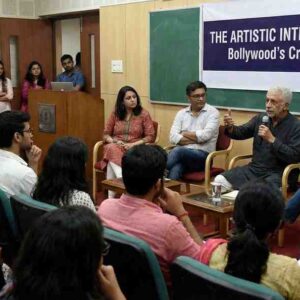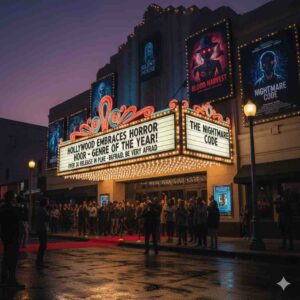Key Metrics (2025):
- Cannes Film Festival 2025: Over 75 designer-label collaborations officially announced for red carpet appearances
(Source: Festival de Cannes, Vogue Business) - Oscars 2025: 6 of 10 Best Dressed celebrities wore custom sustainable couture
(Source: The Academy, Red Carpet Green Dress Initiative) - Social Media Reach: Red carpet looks generated over 1.2 billion impressions during major global festivals in Q1–Q2 2025
(Source: Launchmetrics Fashion & Media Impact Report) - Top Brands in Festival Circuit: Louis Vuitton, Valentino, Sabyasachi, Schiaparelli, Rahul Mishra
From Premiere to Paris: The Film-Fashion Nexus in 2025
In 2025, the synergy between cinema and couture is more than ceremonial—it’s a structured, strategic alliance. Red carpet moments at global film festivals like Cannes, Venice, and the Oscars have become essential launchpads for fashion labels, both legacy and emerging. No longer just about glamour, these appearances are driving trends, launching collaborations, and redefining the commercial playbook for both industries.
Fashion houses now time their global debuts with these events, often tailoring entire collections for festival visibility. According to Launchmetrics, the fashion impact value (FIV) of the 2025 Cannes Film Festival crossed €250 million, with looks from stars like Zendaya, Deepika Padukone, and Timothée Chalamet contributing significantly.
Strategic Styling and Official Collaborations
Fashion has moved from passive dressing to active storytelling. Designers now work directly with production teams and stylists weeks in advance to create custom gowns, suits, and accessories that reflect the films’ tone or character arcs.
At the 2025 Oscars, Louis Vuitton partnered with Emma Stone for a custom archival-inspired dress drawing from 1950s Hollywood, while Valentino styled Korean actor Song Kang with a silk-layered reinterpretation of hanbok for the Cannes red carpet.
These collaborations are not spontaneous. They are brand-positioned campaigns backed by digital releases, influencer seeding, and behind-the-scenes content drops—turning a single outfit into a full-fledged media product.
Cultural Crossovers and Global Designers Rising
The red carpet has also become more globally inclusive. Indian designers like Sabyasachi and Rahul Mishra were spotlighted at Cannes 2025, with actors from Bollywood and the South Korean wave embracing traditional silhouettes with global tailoring finesse.
African labels such as Thebe Magugu (South Africa) and Orange Culture (Nigeria) were also seen across the Venice Film Festival circuit, worn by nominees and jurors alike, reflecting a broader shift toward fashion pluralism and diaspora pride.
The Rise of Red Carpet Sustainability
Sustainability isn’t just a backstage conversation—it’s a visible trend. The Oscars 2025 saw six out of ten top-dressed celebrities wearing sustainable couture, according to the Red Carpet Green Dress Initiative. Upcycled fabrics, biodegradable embellishments, and transparent supply chains are now part of red carpet narratives.
Fashion houses like Stella McCartney and Rahul Mishra are leading the change by issuing post-event sustainability disclosures and aligning with celebrity-driven environmental advocacy.
Conclusion: Red Carpet as Fashion’s Global Stage
In 2025, the red carpet is no longer just a prelude to the film—it is the fashion industry’s most watched runway. With festival appearances shaping seasonal trends, boosting label equity, and amplifying cultural narratives, cinema and couture are now intertwined in a powerful global choreography. As films compete for awards, designers compete for the spotlight—on the same stage, before the same cameras, and with equally lasting impact.












